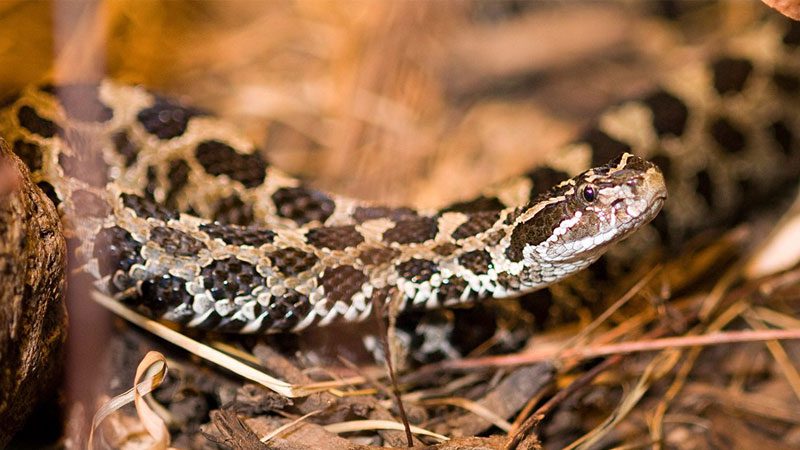Welcome to Lincoln Park Zoo’s new web app! Share your feedback
Eastern Massasauga Rattlesnake
Regenstein Small Mammal-Reptile House
Did You Know?
- Like all vipers, eastern massasauga rattlesnakes have enlarged, hollow fangs at the front of their mouths. The fangs inject a venomous saliva into prey.
- They are sit-and-wait predators. They detect prey using vibrations in the ground, heat-sensing pits near their eyes, a strong sense of smell, and sharp vision.
- As venomous snakes, Eastern massasauga rattlesnakes are often feared by humans, leading to persecution. Since they also depend on disappearing wetlands, their numbers are declining. Lincoln Park Zoo, along with state and national authorities, are working to conserve them.
Don’t See the Animals?
Why aren’t animals visible at all times? To promote positive animal welfare, we provide animals with choices. They can choose to spend time in areas that are out of public view.

Take an Animal Home with You
Overview
Scientific Name: Sistrurus catenatus catenatus
Class: Reptiles
Diet: Small rodents like mice and voles (also frogs and other snakes)
Range: Eastern and Midwestern United States and southeastern Canada
Endangered Status: Least Concern
More Information
At about 2 feet long on average, eastern massasauga rattlesnakes are small snakes with thick bodies and heart-shaped heads. Adults are gray or light brown with large brown blotches on their back and smaller ones on their sides. Younger snakes have more vivid colors.
These snakes reside in wet areas such as prairies and marshes. They hibernate alone in burrows or under logs and tree roots, generally close to water level. After mating takes place in early summer, females hold the eggs inside their bodies instead of laying them. After about 3.5 months, they give birth to up to 20 offspring.

